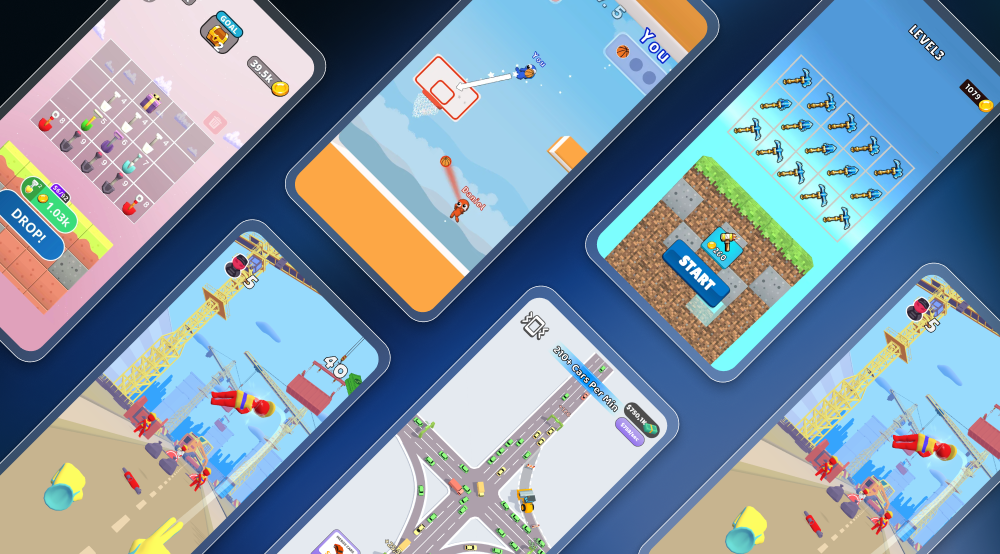ironSource sat down with the growth team at Netmarble to hear their thoughts on the future of role-playing games, tips for monetizing RPG, and a look at how Netmarble measures success. Keep reading for a transcript of the conversation and more of Netmarble's insights.
Tell us about Netmarble and the games your company makes.
Netmarble is a Korean gaming company established in 2000 focused on developing and publishing PC and mobile games. Our most well-known titles include Lineage 2 Revolution, Marvel Future Fight, Seven Deadly Sins, and many more. Netmarble largely services games in the RPG and mid/hard-core genre. With the acquisition of Jam City in 2015 and Kabam in 2017, Netmarble continues to build and grow its portfolio in various genres, with the latest examples being Koongya Catchmind and BTS World.
What’s the key to balancing in-app purchases and ads in RPG?
The main revenue stream for mid/hard-core titles’ is from in-app purchases - and unlike casual or hyper-casual games, we are unable to depend heavily on ad revenue via interstitial ads and unable to increase the frequency of ad exposure. With this in mind, Netmarble focuses on determining the optimal placement within the game to maximize revenue and provide optimal rewards for high user engagement.
Our strategic focus on placement optimization ensures that in-app ads do not create negative experiences for active and paying users. We balance the game mechanics by making sure ad engagement does not affect the gameplay, and any additional rewards come from user-initiated engagements. We also continuously track engaged users’ retention rates to determine the influence of in-app ads on the overall business.

What monetization metrics are most important to optimize for in RPG? What does success look like?
We look at ad monetization as an additional incremental source of revenue, unlike hyper-casual games in which their focus is mainly on maximizing ad revenue. We monitor the improvement in retention of ad engaged users vs non-engaged users and what is influencing that positive retention trend. Additionally, we monitor optimal ad engagement metrics and views to determine ad revenue KPIs.
We are effectively utilizing the various revenue data provided by the ironSource dashboard, especially the reporting function that allows us to analyze performance by placement. Additionally, the data we pulled and re-processed into our BI via the API has been tremendously helpful. We also in many cases experienced a heavy workload and difficulty in managing revenue when needing to add new networks or change the waterfall. But we were very pleased to be able to resolve this issue with ironSource’s A/B testing functionality.
What are 3 things every RPG developer should know for monetizing their games?
- Beyond just analyzing ad revenue metrics, it is important to have the capability to breakdown and determine how ad revenue is influencing in-app purchases, retention, and other key behaviors of users.
- The majority of revenue is driven by in-app purchases, and therefore the main goal should not just be maximizing ad revenue but determining the ratio of ad revenue from the overall revenue number (IAP included) and setting the KPIs accordingly.
- Be sure to connect ad revenue to user acquisition as well, and analyze ROAS and performance by channel.
How does Netmarble manage its monetization across such a large portfolio?
With Netmarble having a large volume of studios developing games at any given point in time, it was difficult for us to introduce and explain details of the monetization platform each time there was a need. From a development standpoint, we were able to decrease the burden on our development process as ironSource provided an adaptor for easy integration instead of standalone SDK for each network channel, and with the support from ironSource’s technical team, we eliminated much of the trial-and-error testing phase we would have otherwise experienced. For these reasons, we were able to stabilize our ad monetization process.
While we experienced some hurdles at the beginning with limited knowledge and experience in managing ad monetization, ironSource not only provided the mediation platform but was actively consulting and providing needed information, which was very helpful for us.
Where is RPG headed in 2020?
We have been seeing more and more traditional RPG verticals that were dependent on in-app purchases incorporating in-app ads. Our assessment from this trend is that RPG's business model of maximizing revenue from the traditional hardcore gamers will now broaden to include acquiring casual users as well.
“RPG’s business model of maximizing revenue from the traditional hardcore gamers will now broaden to include acquiring casual users as well”
What’s next for Netmarble?
Netmarble will continue to service high-quality games for the global market, and we will explore various genres in addition to the RPG vertical. Also, we will continue to test different in-app ad models, which are constantly emerging in the global gaming market.




